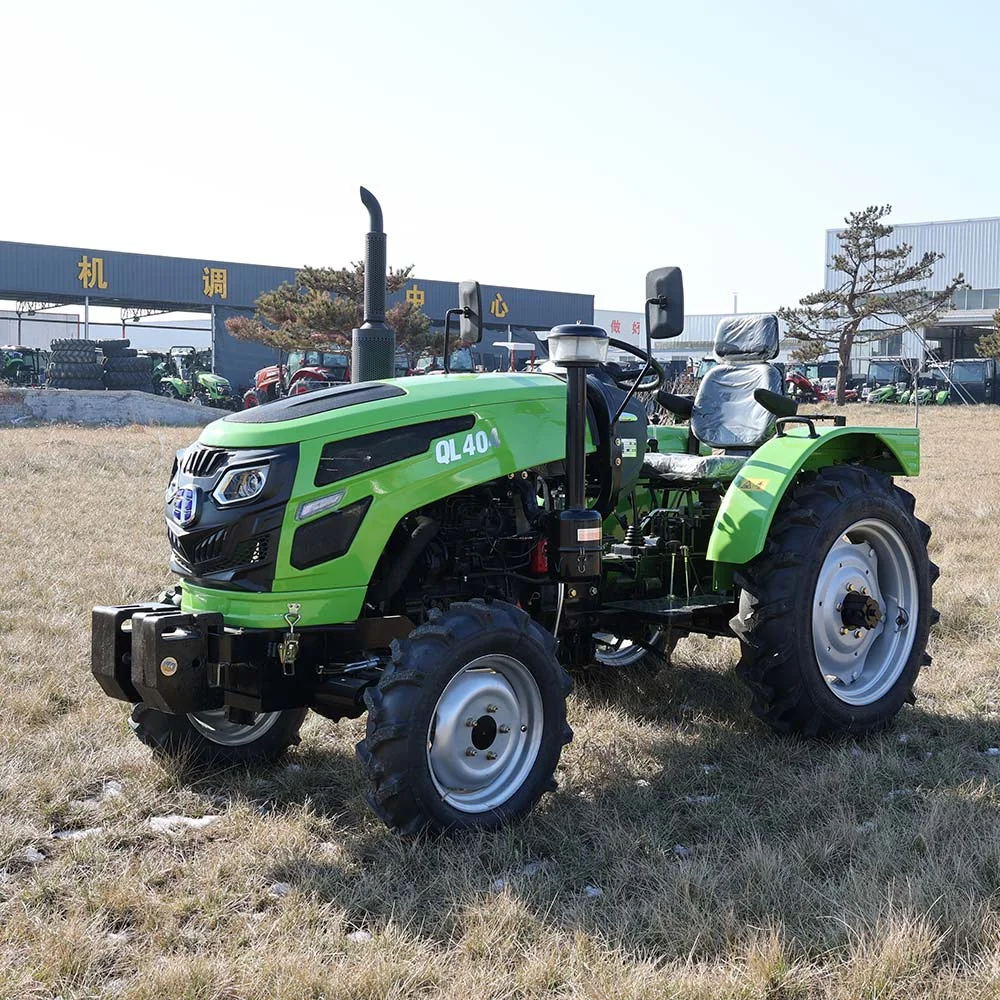Email: [email protected] Whatsapp: 8618266768780
Small Tractors: Big Performance, Compact Size
Welcome to My Blog!
Before we dive into the content, I’d love for you to join me on my social media platforms where I share more insights, engage with the community, and post updates. Here’s how you can connect with me:
Facebook: https://www.facebook.com/profile.php?id=100072217509763
LinkedIn: https://www.linkedin.com/company/74949059/admin/dashboard/
YouTube:https://www.youtube.com/@tractormanufacturer-lc5qz
TikTok: https://www.tiktok.com/@tractormanufacturer
Now, let’s get started on our journey together. I hope you find the content here insightful, engaging, and valuable.
Introduction
Are you thinking “Can a compact tractor really handle big jobs?” The answer is a resounding yes. Small tractors deliver impressive performance—whether you’re mowing, tilling, hauling or landscaping—without requiring large storage space or high fuel costs. In this guide, we’ll explore what makes small tractors game-changers, how to choose the right model for your needs, and why they deserve a spot on your farm or property.

What are small tractors and why they matter
The term small tractors refers to utility tractors typically in the 20–50 hp range, with compact frames and tight turning radii. According to industry reports, this category has seen a 12% market growth year-over-year as hobby farms, vineyards, and estate owners adopt compact machines that offer big functionality. Their versatility—from front loader work to mowing, tilling, snow clearing, and trailer hauling—makes them a workhorse in a small package.
Key advantages of small tractors

Maneuverability in tight spaces
Compact wheelbase and narrow widths allow entry through garden gates and barn doors. With turning radii as tight as 9 feet, you can operate under trees, around buildings, and along terraces—without extra trimming or damage.
Lower operating costs and fuel efficiency
Smaller engines mean lower initial cost, reduced maintenance, and fuel use under 1 gallon/hour at typical loads. With diesel prices rising, small tractors save about $2,500/year compared to a full-size 100 hp class machine, based on owner surveys.
Versatile attachments and PTO compatibility
small tractors offer multi-functionality through front loaders, mid-mount mowers, backhoes, tillers, snow blowers, box blades, landscape rakes, and pallet forks. Most are compatible with 540 rpm PTO shafts, preventing the need for specialized or expensive tooling.
Ease of ownership and storage
Their size fits small sheds, side garages, and covered barns. Weighing 2,500–4,000 lb, they can be towed behind full-size pickups without trailer upgrades—making seasonal maintenance easy.
Surprising power-to-size ratio
With hydraulic steering, efficient transmissions, and multi-cylinder diesels, today’s compact tractors rival older 60 hp tractors in horsepower efficiency—while using 30–40% less diesel per hour.
Mid-article table: Small tractor models by task
| Task | HP Range | Recommended Attachment | Typical Fuel Use | Ideal PTO RPM |
|---|---|---|---|---|
| Lawn mowing | 20–30 hp | Mid-mount rotary cutter | 0.6 gal/hr | 540 |
| Front loading | 25–40 hp | Loader bucket | 0.8 gal/hr | – |
| Tilling/gardening | 25–35 hp | Rear tiller | 0.7 gal/hr | 540 |
| Hauling/trailering | 30–45 hp | 3-point trailer hitch | 0.9 gal/hr | – |
| Snow removal | 30–40 hp | Snowblower or plow | 0.8 gal/hr | 540 |
This quick reference helps you match small tractors with your regular chores.
Selecting the right engine and transmission
Engine features to look for include reliable diesel motors with 3–4 cylinders, 2,000–2,500 RPM range, and rated hp numbers. Transmission choices include:
- Hydrostatic (HST): Smooth, pedal-operated forward-reverse; ideal for loader work and beginner users
- Synchro-shift: Manual gear shifting with clutch, sturdy and efficient for general tillage and mowing
- Partial power shift: Offers on-the-go shifting for flexibility in changing conditions
Choosing between Hydro and gear-drive affects performance: Hydro shifts smoothly for loader operations, while gears excel at field work. PTO types (live, independent, mid-PTO) support multiple tools simultaneously.
Hydraulic systems and lifting capacity
Lifting capacity matters when stacking pallets or moving heavy soil: typical rear 3-point lifts range from 1,200 to 2,400 lb. Load-sensing hydraulics allow auto-flow distribution and precise control—ideal for loader control, backhoes, or hay bale spears.
Cabin options and operator comfort
Customization choices range from open-air roll bars to enclosed cabs with heating, AC, and glass doors. Suspension seats, tilt steering, and ergonomic controls reduce fatigue during long tasks. Visibility-enhancing LED work lights and rear-mounted spotlights are common on Pro-grade trims.
Attachments expand your tractor’s reach
Common attachments include:
- Front loaders with buckets, pallet forks, bale spears
- Rear tillers for prepping soil
- Mid-mount rotary cutters for brush & lawns
- Snow blades or blowers for winter cleanup
- Box blades/landscape rakes for grading and material handling
A properly equipped tractor does the job of several machines while saving on fuel and space.
Maintenance tips to maximize lifespan
Routine tasks keep small tractors running strong:
- Change engine/diff oil every 100 hours
- Check hydraulic fluid quarterly
- Grease fittings at loader joints, PTO shafts every 8–10 hours
- Replace air filters seasonally
- Inspect tire pressure before each shift
Owner data shows consistent maintenance extends engine life to over 4,000 hours—even in hobby-farm applications.
Dealer support and parts availability
Strong dealer networks ensure fast delivery of filters, belts, blades, and hydraulic hoses. Extended warranties typically cover 2–5 years on engines and drivetrain, supporting high uptime.
Return on investment and resale value
Compact tractors retain 50–60% of original value after five years. Comparing yields, a $25,000 small tractor recoups cost in 3–4 years through reduced external labor and equipment rental. Well-maintained machines see stable resale prices.
Small tractors in specialty applications
Traits suit diverse users:
- Vineyards and orchards: narrow models (<55 in width) fit rows
- Estate and landscape management: loaders and mowers in one
- Construction site prep: skid gauge, rippers, trenchers
- Dairy/livestock farms: rear hydraulic bale handling
Versatile small tractors serve cross-industry roles.
Sustainability and emissions
Modern diesel engines meet Tier 4 standards or equivalent, using DEF/urea systems. Lower fuel use reduces emissions: 40% savings versus larger tractors equals ~2 tons CO₂/year reductions.
Financing options and total cost of ownership
Flexible leasing, finance deals, and rental-to-purchase programs help spread investment. Compare predicted annual operating costs (fuel, oil, maintenance) to predicted savings—small tractors often outperform labor-equivalent alternatives.


Conclusion
Small tractors combine power, versatility, and efficiency in a compact frame. From loading and mowing to landscaping and snow clearing, they handle a wide range of tasks affordably. When equipped thoughtfully and maintained diligently, small tractors become invaluable tools for any operation. Reach out to explore models, find expert advice, and match the machine to your needs.
FAQ
Can a small tractor handle extension mower decks?
Yes—most 30–40 hp tractors manage 60–72” decks effectively, with proper ballast to balance.
Is a cab worth it?
If you’ll use it year-round or in rough weather, yes—it improves comfort and resale value.
How often do I need loader hydraulics serviced?
Grease pivot points every 8 hours; check hoses monthly; change filter yearly.
Are small tractors easy to transport?
Absolutely—ranging from 2,500–4,000 lb, they tow behind standard heavy-duty trucks with simple trailers.
Do they support attachments like snow blowers?
Definitely—front, rear, and mid-PTO systems support snow removal setups for winter work.
About Us
Shandong Qilu Industrial Co., Ltd. is a professional manufacturer and exporter integrating the development and production of excavators, loaders and tractors. We provide the best service, absolutely.
Recent Posts
Video demo
-1.png)
Contact Us Today!
Any question, quote or inquiry? Click the button to send message.
Qilu Industrial will always here to help.
